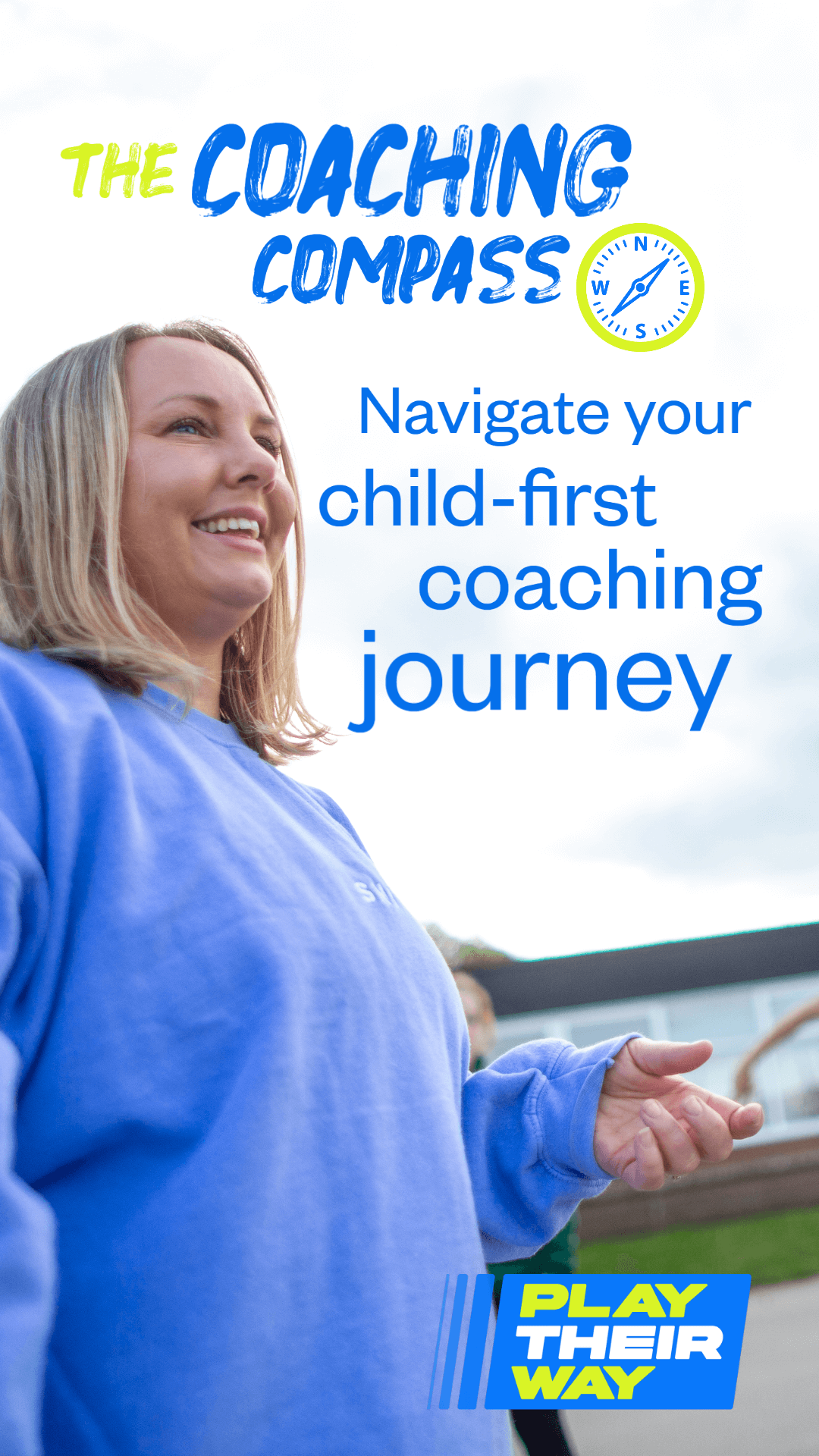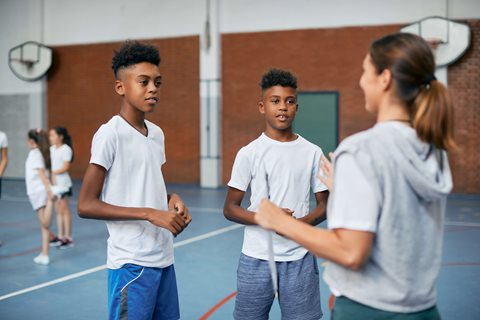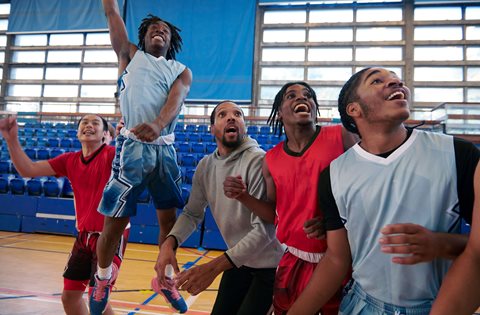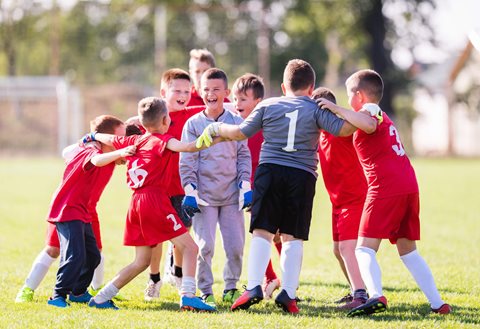Our cookies
We use essential cookies to make our website work smoothly for you. To make sure we're always improving, we'd like to use analytics to track how people use the site. We won't set non-essential cookies unless you give us permission. You can find more information about all the cookies we use in our Privacy and Cookie Policy.
Some cookies are a must for our website to function properly. If you turn off essential cookies, it may affect how you experience our site.
The non-essential cookies we use help us understand how you use our website and make improvements to enhance your experience.
Hoops and High-Fives: A Guide to Coaching Youth Basketball
Coaching youth basketball is both challenging and rewarding. Two coaches provide expert advice on developing a child-first approach that will make a positive, long-lasting change to the lives of the children and young people you coach
.jpg?width=640&resizemode=force)
When people think of basketball, they are most likely thinking of the highly-paid statuesque stars of the NBA and WNBA. Few of us will get to coach basketball on that grandest of stages – but whoever you coach, putting children first is at the heart of coach development, and there are so many ways to progress when you’re coaching youth basketball. And of course, you’ll be supporting young people to become the best basketball players they can.
The sport offers plenty of opportunities for smaller and younger athletes via its small-sided mini-basketball variation – and of course wheelchair basketball now boasts a high profile thanks to its showcase in the Paralympics. It can be enjoyed by disabled and able-bodied players alike.
Here we look at some of the key things to think about when planning basketball coaching sessions for kids – from the principles that guide your planning to the activities you might try out.
Planning a kids' basketball coaching session
As with any sport, planning a session to coach youth basketball can take many different forms. Dr Sergio Lara-Bercial is an experienced coach of basketball – a former professional player himself – who has also previously coached Team GB as well as other elite teams. He always plans his sessions well in advance.
"I'm a planner," says Sergio. "I have a detailed season plan and then split it into smaller blocks and then sessions plans. It gives me a comfort blanket that I know what I'm doing, but I am then very happy to read what's in front of me and amend the plan accordingly."
Think about what you want to cover in each session, which activities you might do and how long they might take, what you want the players to take away with them, and what you want to be sure to remember while you’re coaching youth basketball.
For help with getting started, take a look at kids basketball coaching courses.
Things to consider when coaching basketball to kids
A child-first coaching philosophy is easy to embed in your sessions as you teach basketball to kids. Ryan Raghoo, a top-class athlete himself who now coaches a variety of sports to young people including wheelchair basketball, has some great advice on what coaches should be considering.
For Ryan, coaching wheelchair basketball with a group of mixed physical ability is not just about the sport; it’s about improving the way that group of children relate to each other.
"When I'm delivering some wheelchair basketball, it’s often to a group of kids where 95 per cent of them will be able-bodied," he explains. "By the end of the session they will think wheelchair basketball is the greatest thing in the world – and they’ve also got improved interaction with their classmates and peers that have got a disability. That's how I gauge it – where actually a person is no longer the one on the side, they're the centre of attention. It’s not just about playing sport, it’s the social side of it as well."
Sergio agrees that coaching youth basketball can and should promote inclusion – and he also says that as children learn the sport of basketball, they are also learning other skills.
"How do we create opportunities for them to realise, ‘When I share, things get better for everybody’?" he asks. "If you want to encourage teamwork, start with two v two – it’s easier to identify who’s on your team and who’s there to help you. Bring it to their level so they can experience success as a team."
Ryan says that noise is key – the buzz of a group enjoying what they’re doing is unmistakable, particularly when you’re working with rowdy and excited little ones. Even with older groups, checking in with them for their feedback throughout is important.
"I always try and ask the athletes, whatever level they are, ‘How are you getting on, how are you finding this? What's difficult? What's easy?’" says Ryan. "I try and use a questioning approach."
Ryan says that when it comes to school sport, speaking to disabled students about what they want to do in sessions is vital.
"Talk to the students," he says. "The best thing that any school can do – and it needs more planning – is have a meeting with the student and find out what they want to do. That will give you a good idea of how you can make things happen."
.jpg)
How do you coach basketball to a beginner?
Sergio and Ryan both coach different formats of basketball – but they agree that the only way to coach a complete beginner, particularly a very young one, is to make it fun. And the most fun way to do that is to get them playing basketball right away.
"I like to use lots of little games – not just, ‘Go away and do 20 of these,'" says Ryan. "Let's play a game, let's make it interactive, and get as many people involved as possible."
"Let them play, that’s the only way," adds Sergio. "They’re out there because they want to play."
Creating that sense of fun with beginner basketball players is the best way to ensure their engagement with the sport.
“There’s nothing you can teach if they don’t come back,” Sergio points out.
You have to find a way to keep them coming. It’s not only about having fun, it’s connecting with them, helping them work with each other, making them feel welcome. You don’t have to be a clown all the time for children to be happy in your session!"
Dr Sergio Lara-Bercial Leeds Beckett University
How do you coach more advanced basketball?
As a general rule, Sergio’s approach to coaching is the same regardless of who’s in the group, but he urges coaches to get to know who they’re working with, from the youngest to more advanced basketball players.
"Coaching is the same across all ages and with boys and girls," he says, "but you have to make the effort to look at the world through their eyes.
Always try and anticipate - how will this feel for them, how will it work for them? I know it will work for me, but will it work for an eight-year-old? Always try and put yourself in their shoes a little bit before you start."
Dr Sergio Lara-Bercial Leeds Beckett University
Ryan works with both absolute beginners and those on national squad talent pathways, and says that there can be variable levels of ability in any group. However, the fundamentals of the game need to be covered whenever you’re thinking about how to teach basketball to kids.
"So for example, with defence, those who are experienced, I might ask them to defend a space for a certain amount of time," he says. "With those who are still learning defence, we'll look at are you in the right position, where's your chair in relation to the other person?"
Kids' basketball coaching drills
According to the child-first coaching philosophy, children’s input should steer their basketball coaching sessions – so imposing sets of drills isn’t the way to go.
However, if your squad does want to get into some structured activities, here Ryan and Sergio have some suggestions of some they might like to try.
Basketball coaching drills for young children
When it comes to activities to coach wheelchair basketball, obviously one of the biggest lessons to learn is using the chair safely. Ryan says that health, safety and cost might seem big concepts for the littlest ones, but they catch on quickly.
"From my perspective, a lot of times most kids have never been in a wheelchair before. So before we get to play basketball, I've got to teach them how to move the chair," he says.
"There's all the health and safety bits that no one wants to hear – basic safety features, like keep your fingers out of the wheels, put your feet inside the chair, and then actually how to push the chair, how to stop the chair, how to turn the chair. There are some sessions when we might not even touch a basketball with beginners, even though it’s wheelchair basketball, because it's so important to learn the movements of the chair.
"The second session you can introduce passing, dribbling, basic ball skills. It might be the fifth session you introduce shooting. I don’t think there’s anything wrong with that – I’ve never had a kids’ session where they’re not having fun! It’s not about how quickly they’re progressing."
Ryan says that sessions without a ball for beginners are almost always more fun than with the ball, which makes things much more difficult! He suggests trying relay races with children, tweaking the rules every time: moving the chair with just one hand, for example.
Once they’re comfortable in the chair, bring in the ball. One of Ryan’s favourite games to play with children learning basketball is dribble knockout, which introduces moving with the ball inside a closed space, with the coach defining the parameters. Every player has a ball, and the aim is to dribble your ball inside the area while on the move – but also while trying to knock other players’ balls away from them! The winner is the last player with the ball.
Sergio’s suggestion for the best way of coaching children basketball is to learn through play – however old they are.
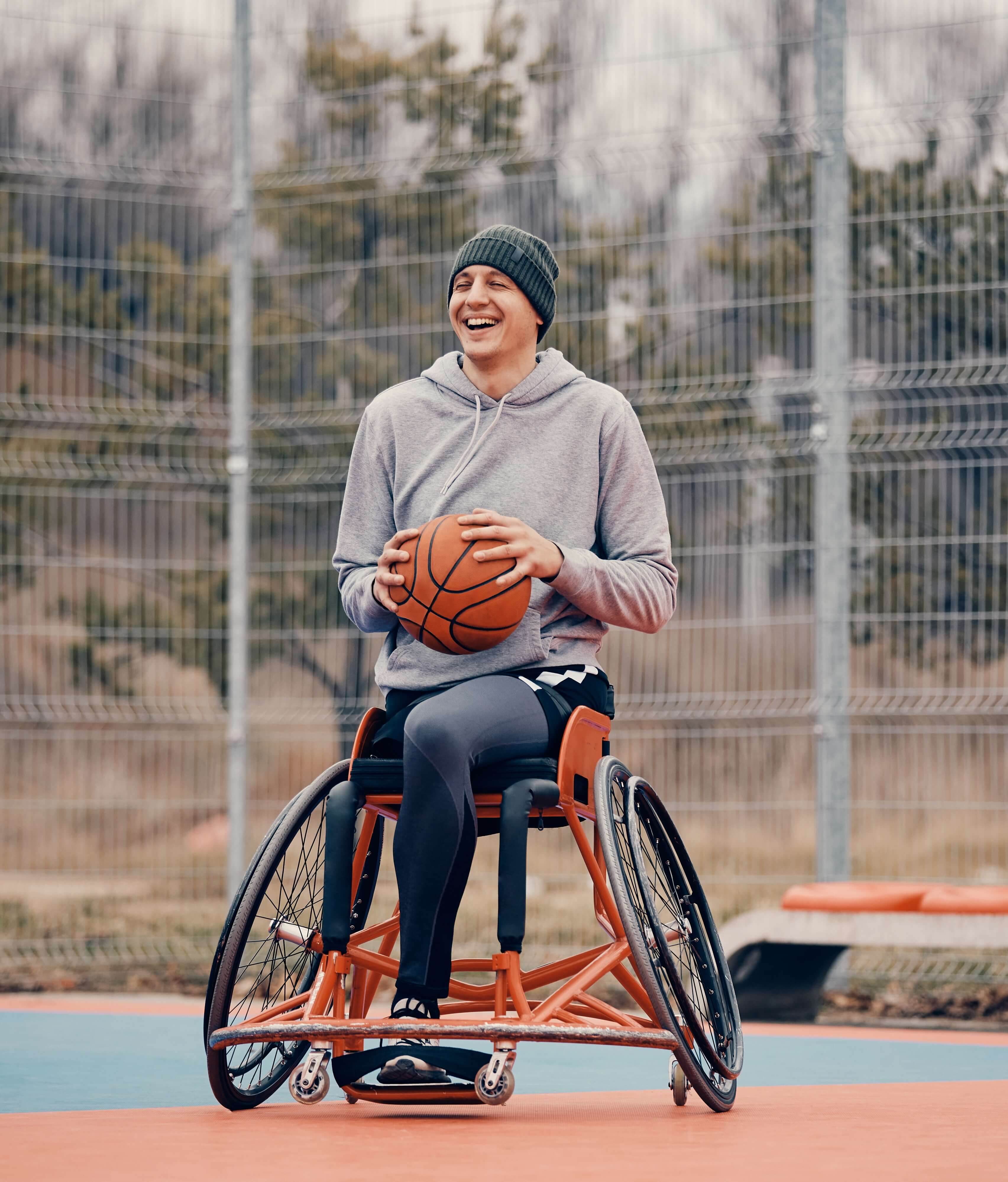
"They get a sense of fun from it," he says. "Sometimes we use playground games, sometimes smaller versions of the sport, but always play – we don’t bore them with explanations or high-level terminology."
Depending on the facilities available, he suggests avoiding too much chat from the coach, and instead putting the children into groups of three or four and getting them playing as quickly as possible – baskets not necessary.
Some playground or party games that might be usefully adapted for coaching children basketball include:
- Tag: The child or children with the ball have to dribble the ball while trying to "tag" as many of their classmates as they can.
- Balloon bounce: Each child has a balloon that they need to keep in the air. Make it more complicated and promote better balance by asking them to stand on one leg or crouch on all fours and keep the balloon up.
- Follow the leader: The group copies the action of the leader, whether that’s dribbling, catching, or some fancy footwork. You as the coach might be the leader to begin with, but one of the players could take over when they are more confident.
"You can play benchball, or end-zone, when you pass the ball around and try to get it to the other side," Sergio says. "You can do relay races – they typically go down quite well. Think of games they already play, and think, 'How can we throw a basketball in there?'" And of course, the children themselves can be involved in coming up with these kinds of suggestions.
5 Child-First Games
Don't drop the ball! Download our free tools, tips and games and grow your coaching practice – like these 5 games which support children to Play Their Way.
FREE GAMES
Basketball coaching drills for high schoolers
This all works for coaching youth basketball with slightly older children as well if they want to try out some activities in a session – making it more complicated and more involved depending on the age group, their skill level, and the basketball coaching facilities the venue might have.
"A lot of it comes down to prep," says Ryan. "There’s often times where we have people who have never shot a basketball before with people who have been playing for a long time. You can teach similar stuff – something like shooting, you teach the fundamentals, the mechanics of how to shoot rather than go away and score ten baskets. It’s looking at where is the individual in their personal journey."
Final thoughts
Ryan believes that coaching wheelchair basketball is a privilege and a huge opportunity – introducing children to ideas around teamwork, communication and inclusion. He explains: "I wish more teachers and more coaches experienced wheelchair basketball. You're able to teach a lot more than you can in mainstream sport. In mainstream football or cricket, I might teach them about football and cricket and teamwork. If I'm delivering wheelchair basketball, I'm doing all of that and more."
Other resources that you may like...
About the contributors
Sergio Lara-Bercial is a professor of Sport Coaching at Leeds Beckett University. Former National Basketball Coach, now coaching U12s and U18s at Manchester Magic. Research areas include coach development, positive youth development, and high-performance coaching leadership styles.
Ryan Raghoo is a former international para-athlete and record-holding long-jumper for Great Britain and England. Transitioning to wheelchair basketball, he founded and coached a university team, developing players who went on to play professionally and represent their countries. Passionate about creating opportunities for individuals with disabilities, Ryan has contributed to international projects in Indonesia and Namibia, and served as Head Coach for Namibia's wheelchair basketball team. Currently, he is part of London Titans and serves as an England Pathway coach for British Wheelchair Basketball, supporting talented junior players.
SHARE THE MOVEMENT
Help spread the word by sharing this website with fellow coaches!

